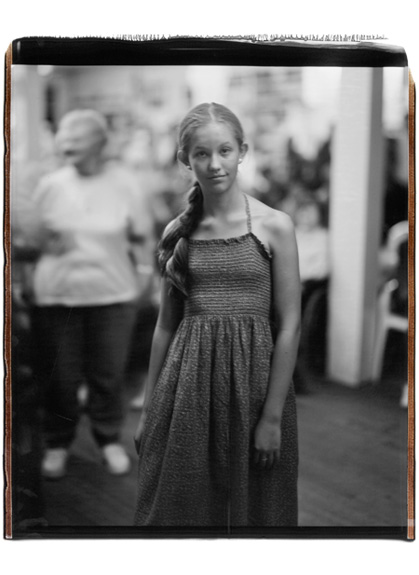Jennifer Trausch has been Director of Photography at the 20×24 Studio since 2003. In that time she has worked with dozens of artists, both in the studio and on location. No one knows the possibilities and limitations of the medium as well as Trausch. Known primarily as an indoor studio camera that uses high powered electronic strobes as its light source, the 20×24 camera is capable of location work. It requires a very large truck, substantial support equipment to protect and stabilize the machine outdoors, but more importantly an understanding of the camera’s capabilities and even more crucial understanding of the film’s response to rapidly changing light conditions. Trausch’s experience with the camera put her in a unique position to exploit the potential of ultra large format photography on location and minimize the disasters always awaiting the inexperienced. Leaving the powerful strobe lighting behind in the studio, Trausch instead exposed with available light, often requiring long exposures, even with the more sensitive Black and White Polaroid emulsion. One must work quickly and confidently to calculate the considerable bellows extension and stay on top of ever-changing light conditions. The technical tour de force alone makes this body of work noteworthy. More impressive are the relationships Trausch develops with her subjects, making connections that few photographers attempt to make.
Here are some of Trausch’s own words describing her project; “In my current body of work shot in the American South, I chose to put the 20×24 Polaroid Camera in active and unpredictable circumstances on the road. In doing this I am filtering out all of the traditional notions of 20×24 shooting, defining my own vision for it. Having operated the camera for seven years, I am very familiar with this handmade machine and understand how colors and light render on its film. I am one of the few people who are not intimidated by its mass, the sheer physicality of shooting on it, and its cumbersome and awkward nature in the field. I have chosen to eschew structure in favor of a looser, more intuitive approach of finding my subject. I depict the subtle progression of a subject or environment over a long exposure. During these long exposures a subject may move, the light may change and embracing these details rather than avoiding them is how my own work differs from the typical approach to the medium.”
Here are some of Trausch’s own words describing her project; “In my current body of work shot in the American South, I chose to put the 20×24 Polaroid Camera in active and unpredictable circumstances on the road. In doing this I am filtering out all of the traditional notions of 20×24 shooting, defining my own vision for it. Having operated the camera for seven years, I am very familiar with this handmade machine and understand how colors and light render on its film. I am one of the few people who are not intimidated by its mass, the sheer physicality of shooting on it, and its cumbersome and awkward nature in the field. I have chosen to eschew structure in favor of a looser, more intuitive approach of finding my subject. I depict the subtle progression of a subject or environment over a long exposure. During these long exposures a subject may move, the light may change and embracing these details rather than avoiding them is how my own work differs from the typical approach to the medium.”






























